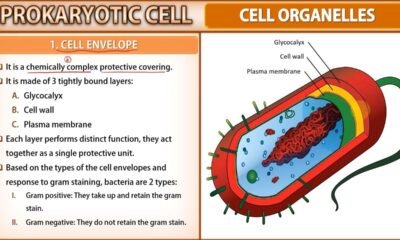Blog
Enzymes Used in Genetic Engineering Short Notes

This article deals with the major enzymes involved in genetic engineering. The enzymes are: 1. Restriction Endonuclease 2. DNA Ligase 3. Alkaline Phosphatase 4. DNA Polymerase & 5. Reverse Transcriptase.
1. Restriction Endonuclease
Ordinary nucleases are endonucleases or exonucleases. The former cleaves the DNA backbone between two nucleotides, i.e., it cleaves the double stranded DNA at any point except the ends, but it involves only one strand of the duplex. The latter remove or digest one nucleotide at a time starting from 5′ or 3′ end of a DNA strand. The restriction endonucleases cleave only at specific regions in a particular DNA, so that discrete and defined fragments are obtained at the end of total digestion. The name ‘restriction’ endonuclease originated from an observation of a system of restriction of the growth of the phage lambda in particular strains of the E. coli host cell.
Most restriction enzymes recognize only one short base sequence in a DNA molecule and make two single strand breaks, one in each strand, generating 3’OH and 5’P groups at each position. The sequences recognized by restriction enzymes are often palindromes, i.e., inverted repetition sequences which are symmetrical. Restriction enzymes can cut DNA in two ways to generate blunt ends (cut precisely at opposite sites, e.g., HpaI) and staggard ends (cut at asymmetrical position, e.g., Eco RI) with short single stranded overhangs at each end. A large number of restriction enzymes have been identified and classified into three categories (type I, II, III) on the basis of their site of cleavage.
Restriction enzymes have three important features:
- Restriction enzymes make breaks in palindromic sequences.
- The breaks are usually not directly opposite to one another.
- The enzymes generate DNA fragments with complementary ends.
2. DNA Ligase
Ends of DNA strands may be joined by the enzyme polynucleotide ligase, called ‘glue’ of the recombinant DNA molecule. The enzyme catalyses the formation of a phosphodiester bond between the 3’OH and 5’P terminals of two nucleotides. The enzyme is thus able to join unrelated DNA, repair nicks in single strand of DNA and join the sugar phosphate backbones of the newly repaired and resident region of a DNA strand.
The enzyme which is extensively used for covalently joining restriction fragments is the ligase from E. coli and that encoded by T4 phage. As the main source of DNA ligase is T4 phage, hence, the enzyme is known as T4 DNA ligase. The ligation reaction is controlled by several factors, such as pH, temperature, concentration and kinds of sticky ends, etc. As ligase uses the ends of DNA molecules as substrates rather than the entire DNA, the kinetics of joining depend on the number of ends (concentration) available for joining.
3. Alkaline Phosphatase
The broken fragments of plasmids, instead of joining with foreign DNA, join the cohesive end of the same DNA molecules. The treatment with alkaline phosphatase prevents re-circularisation of plasmid vector and increases the frequency of production of recombinant DNA molecule.
4. DNA Polymerase
The DNA polymerase that is generally utilized is either the DNA Pol I from E. coli or the T4 DNA polymerase encoded by the phage gene. The E. coli enzyme is basically a proof-reading and repairing enzyme. It is composed of 3 subunits each with a specific activity. They are: 5′-3′ polymerase, 3′-5′ exonuclease and 5′-3′ exonuclease.
The enzyme is useful for synthesizing short length of a DNA strand, especially by the nick translation method. The 5-3′ exonuclease activity may be deleted, this edited enzyme is referred to as the klenow fragment. The T4 DNA Pol possesses, like the klenow fragment, only the polymerase and proofreading (3′-5′ exonuclease) functions.
5. Reverse Transcriptase
Retroviruses (possessing RNA) contain RNA dependent DNA polymerase which is called reverse transcriptase. This produces single stranded DNA, which in turn functions as template for complementary long chain of DNA. This enzyme is used to synthesize the copy DNA or complementary DNA (cDNA) by using mRNA as a template. The enzyme is very useful for the synthesis of cDNA and construction of cDNA clone bank and to make short labelled probes.

 Blog5 months ago
Blog5 months ago[PPT] Human Reproduction Class 12 Notes
- Blog5 months ago
PG TRB Botany Study Material PDF Free Download

 Blog5 months ago
Blog5 months ago[PPT] The living world Class 11 Notes

 Blog5 months ago
Blog5 months agoCell The Unit of Life Complete Notes | Class 11 & NEET Free Notes
- Blog5 months ago
Contribution of Indian Phycologists (4 Famous Algologist)

 Entertainment4 months ago
Entertainment4 months agoIbomma Bappam: Redefines Telugu Streaming Trend
- Blog5 months ago
Class 12 Biology Notes Chapter wise PPT
- Blog5 months ago
Class 10 Biology Notes Chapter wise PPT










